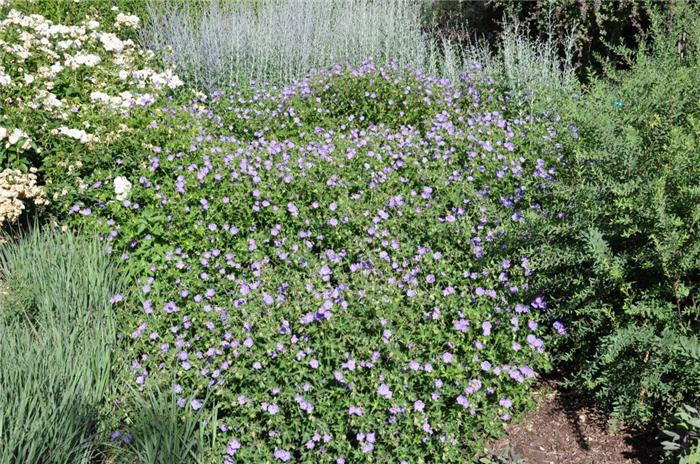| Botanical Name: Geranium sanguineum | |
| Common Name: Bloody Cranesbill |

-
Anatomy
-
Culture
-
Design
Plant Type
Ground cover, Perennial
Height Range
Under 1', 1-3'
Flower Color
Lavender, Red, Violet
Flower Season
Spring, Summer
Leaf Color
Green, Red
Bark Color
n/a
Fruit Color
n/a
Fruit Season
n/a
Sun
Full, Half
Water
Medium, Extra in Summer
Growth Rate
Fast, Moderate
Soil Type
Sandy, Clay, Loam
Soil Condition
Average, Rich, Poor, Well-drained, Dry
Soil pH
Neutral, Basic
Adverse Factors
n/a
Design Styles
English Cottage, Meadow, Mediterranean, Ranch, Spanish, Woodland
Accenting Features
Fall Color, Showy Flowers
Seasonal Interest
Spring, Summer, Fall
Location Uses
Entry, Perennial Border, Shrub Border, Foundation, Parking Strip, Raised Planter, Walkways, With Rocks
Special Uses
Mass Planting, Small Spaces
Attracts Wildlife
n/a
Information by: Stephanie Duer
Photographer: Linda Engstrom
Photographer: Linda Engstrom
-
Description
-
Notes
These is a large group of perennial geranium, known for its generally hummock-mound forming habits, its cup-shaped flowers that bloom late spring to early summer, and its deeply-divided green foliage. There are many cultivars available; some are listed within this database, but its hard to include them all - check the plant tag for details of characteristics.
Grow in full sun to part shade in well drained soils. Tolerant of sandy or clay soils. If the flowers seem to wane with the summer heat, cut the plant back hard and it may bloom again when the temperatures begin to drop in late summer.